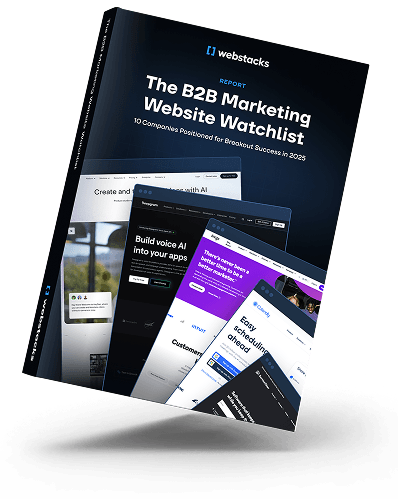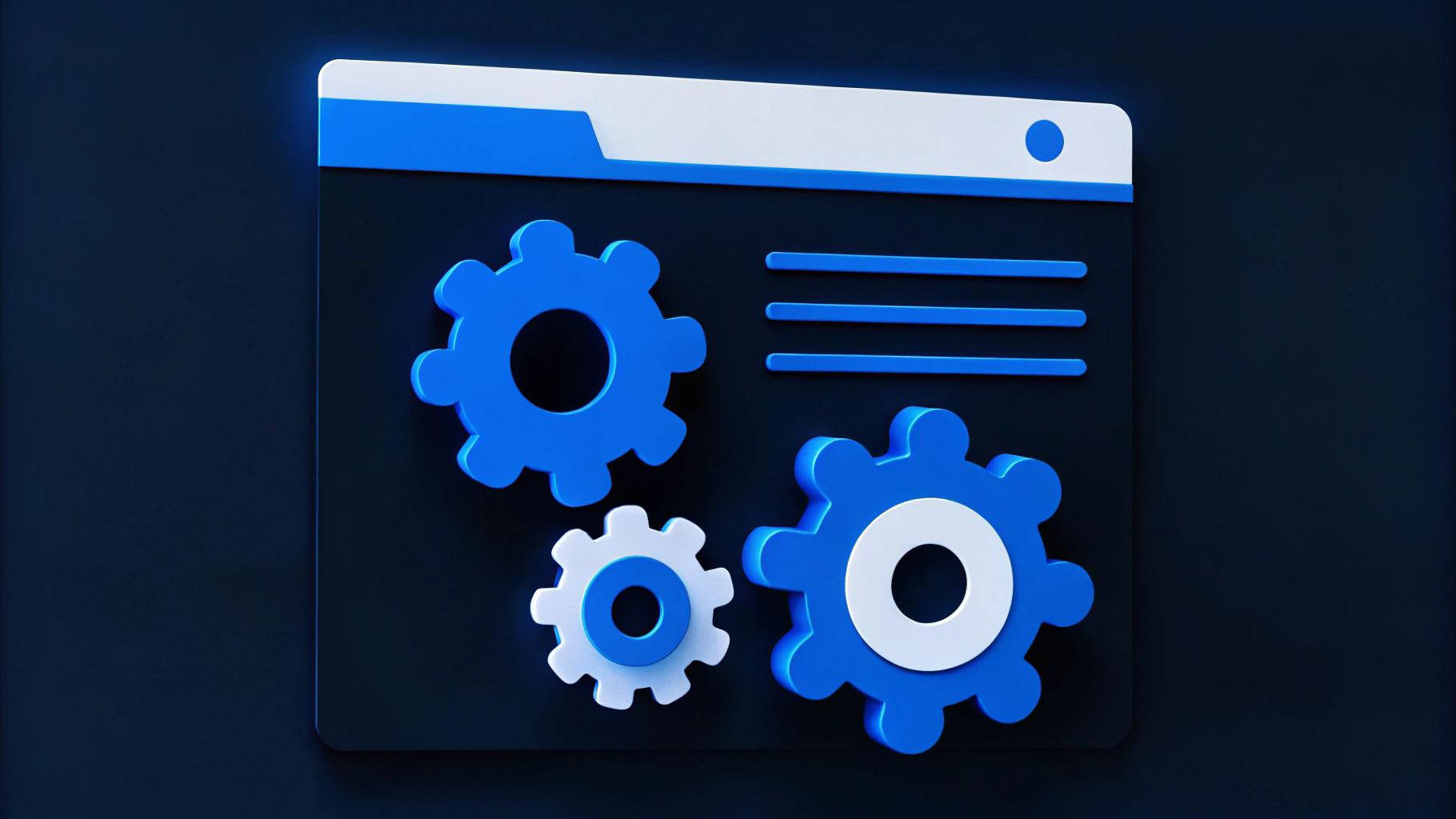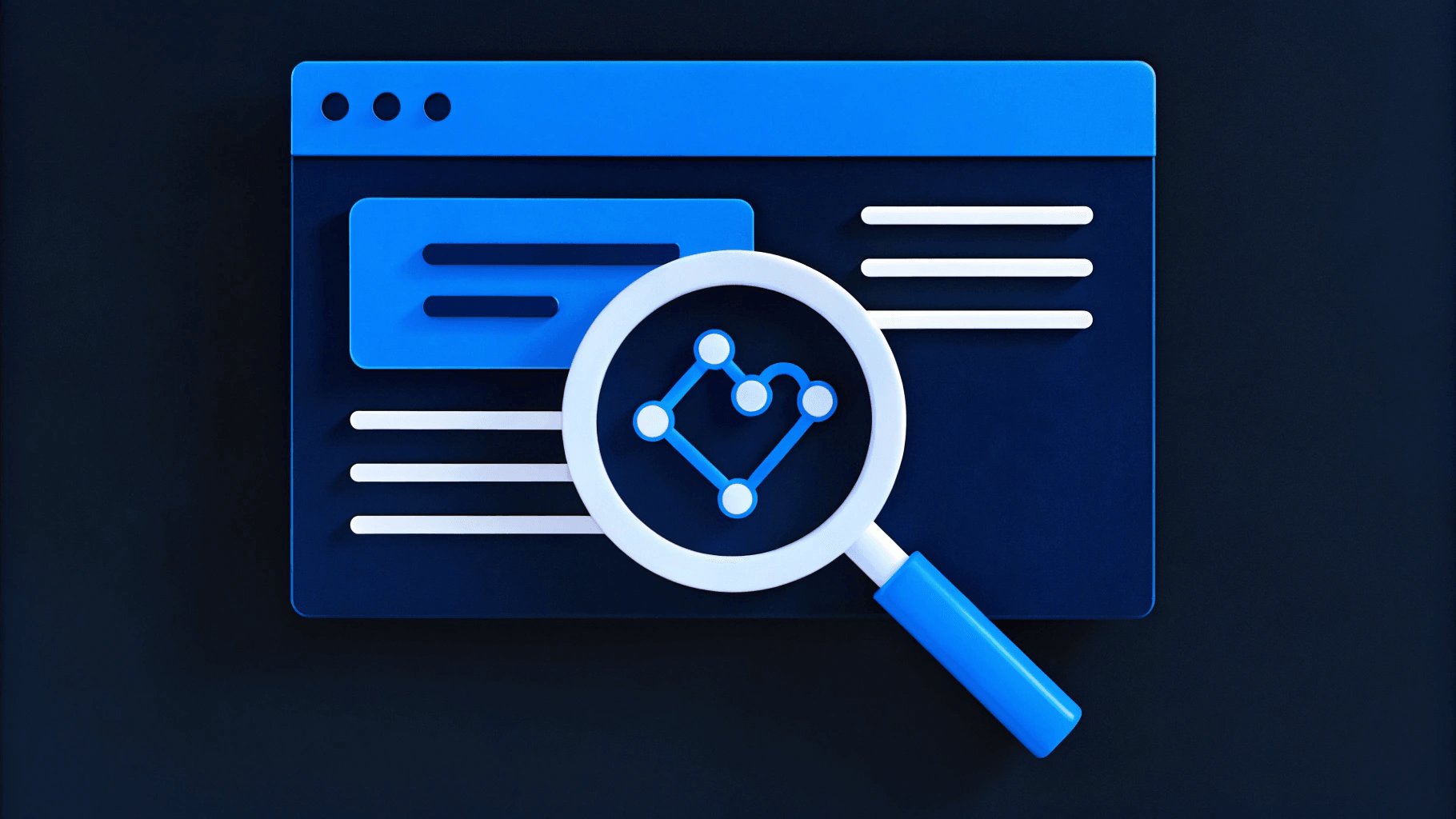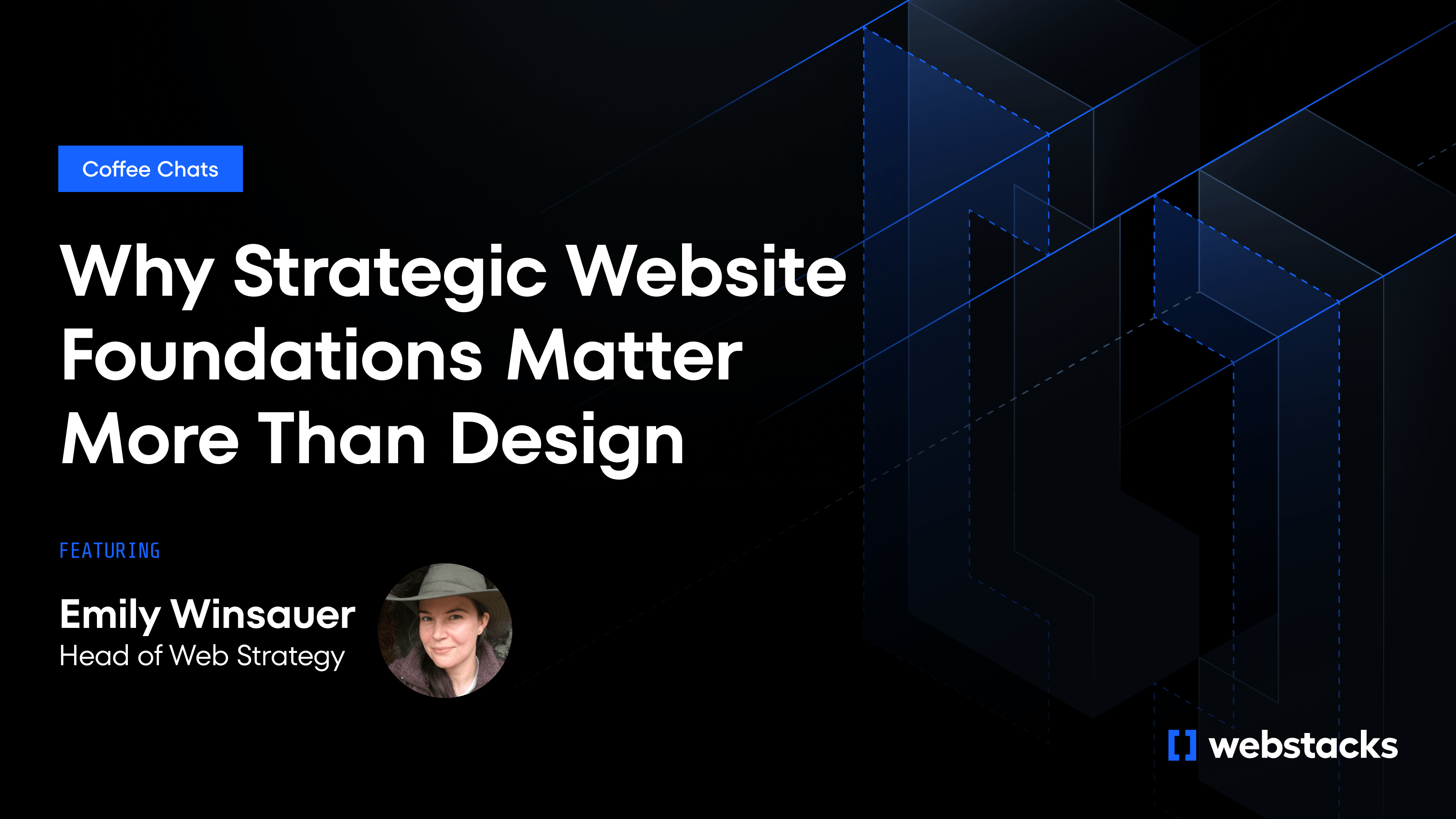The way B2B companies generate demand has changed. Buyers now research independently, involve multiple stakeholders, and engage with content long before they fill out a form or talk to sales. Traditional lead generation tactics, such as gated PDFs and generic nurture sequences, no longer deliver the desired results.
At Webstacks, we believe that a successful demand generation strategy in B2B starts with the website. When your site is modular, fast, and built for marketing velocity, it becomes the engine that powers consistent, scalable growth. It allows teams to launch targeted campaigns, personalize content by persona, and adapt quickly to market shifts without waiting on developer resources.
Modern demand generation is about building a system that connects content, technology, and go-to-market teams. It creates consistent experiences, meets buyers where they are, and guides them through the journey with clarity and purpose.
Let’s explore six B2B demand generation strategies that reflect how high-performing teams operate today.

1. Bring Marketing, Sales, and Product Together Early
Effective growth requires alignment between your go-to-market teams early in the planning process, not after campaigns are already live.
Build Shared Workflows in Your CMS
Create systems that allow marketing to build landing pages, sales to access real-time engagement data, and product teams to push updates without developer bottlenecks. This eliminates the delays that kill campaign momentum.
Implement Cross-Functional Planning
Start with shared KPIs that span departments, such as conversion rates, pipeline velocity, and customer acquisition costs, that everyone owns together. Schedule weekly cross-functional planning meetings where product roadmaps inform marketing campaigns and sales feedback shapes messaging priorities.
When your teams share the same success metrics and planning rhythms, your growth engine becomes far more effective because every touchpoint reinforces the same message.
2. Leverage Strategic Positioning to Prime Demand in B2B Markets
Your positioning determines whether prospects immediately understand your value or scroll past your content. Without clear messaging, even well-executed campaigns fall flat because they fail to resonate with the target audience's specific pain points.
Build Centralized Messaging Hubs
Create messaging hubs for your key personas that serve as single sources of truth. Ensure that your sales team, marketing campaigns, and product messaging all speak the same language. When your message is precise, prospects self-identify as good fits faster.
Let Positioning Amplify Other Tactics
Strong positioning creates a foundation that strengthens every other tactic. It’s what makes your message stick and your brand stand out.
- Content resonates more deeply
- Paid campaigns achieve higher click-through rates
- Website converts more visitors
Instead of competing on features or price, you compete on the unique problem you solve and the specific outcome you deliver. That clarity makes everything else work harder and connect faster.
Audit Your Current Messaging
Test whether a prospect could understand your core value proposition within 10 seconds of landing on your homepage. Review your messaging across channels — do your paid ads, email campaigns, and sales decks tell the same story? Look for opportunities to make your message more specific to particular personas or use cases.
The most effective messaging describes what you do and frames why your approach matters uniquely to a target buyer. This creates demand and helps prospects recognize problems they may not have been aware of.
3. Operationalize Demand with the Right Martech Stack
Your growth depends on the technology infrastructure supporting it. When your martech stack operates as disconnected silos, your campaigns operate at a fraction of their potential.
Create Seamless Platform Connections
Start by ensuring your CMS, CRM, and marketing automation platform communicate seamlessly. This integration allows you to track a prospect's journey from first website visit through closed deal, creating a comprehensive view of what drives revenue. Without this connectivity, you're guessing which touchpoints actually influence buying decisions.
Implement Behavioral Lead Scoring
Tools such as HubSpot and Clearbit help you score prospects based on engagement behaviors. That gives you a clearer picture of buying intent. These behaviors include:
- Time spent reading case studies
- Repeated visits to pricing pages
- Downloads of technical documentation
Focus on Necessary Stack Components
The right martech stack keeps your team moving fast and focused on what matters. Think less about having more tools, and more about the role each one plays. Central components of the B2B martech stack include:
- CRM as the source of truth
- Marketing automation for nurturing workflows
- Analytics tools that measure engagement depth rather than volume
Focus on customer needs while reducing complexity. Every tool should serve a specific purpose in your growth system. When companies outgrow their current technology infrastructure, platform migrations become a logical choice for maintaining velocity and avoiding bottlenecks that slow growth.
4. Design Conversion Paths for Multiple Personas
Most B2B websites still treat buyers as a single persona. But CFOs care about ROI. CTOs focus on security and integrations. End users want to know how your product fits into their daily work. When your site serves everyone the same content, it resonates with no one.
To convert a multi-stakeholder buying committee, you need distinct journeys that reflect how each persona researches, evaluates, and decides. Start by identifying what each role needs at different stages.
Map Role-Specific Information Needs
Each persona asks different questions before moving forward. Tailor your content to meet those needs:
- Finance leaders need ROI calculators and cost-benefit analyses.
- IT buyers want security documentation, compliance certifications, and technical specs.
- End users care about ease of implementation and daily workflow impact.
Create Persona-Specific Entry Points
Once you know what each role is looking for, build targeted entry points that lead them to the right resources:
- CFOs should see pricing clarity and business case templates up front.
- Technical buyers need quick access to API docs, security whitepapers, and integration guides.
- End users benefit from product demos and real-world workflow examples.
Remove Friction from the Evaluation Process
Different personas follow different paths to purchase. Map each journey from awareness to decision, then match content to their specific needs and format preferences. This helps each stakeholder move forward without unnecessary friction.
Optimize for Speed, Structure, and Signals
Even the best messaging won’t land if the site is slow or hard to use. Make sure every page loads quickly, looks great on mobile, and is easy to navigate. Use:
- Schema markup
- Clean URL structures
- Optimized meta descriptions
Also, track how each persona engages. Use tools like GA4 and Hotjar to see what content drives progress and where users drop off. These insights help you fine-tune your journeys and increase conversion rates across the board.

5. Build Content That Maps to the Entire Buyer Journey
An effective B2B demand generation strategy happens when you build systems addressing prospects at every stage, from problem recognition through final purchase decision.
ServiceTitan exemplifies this approach with their modular website system that rapidly deploys product education for different contractor types, such as HVAC, plumbing, and electrical, without rebuilding pages from scratch. Each vertical gets tailored messaging while maintaining a consistent conversion architecture.
Create Stage-Specific Assets
Different stages of the buyer journey call for different types of content. To keep prospects moving forward, you need to meet them with the right asset at the right time.
- Top-funnel awareness pieces include industry benchmarking reports, cost-of-inaction calculators, and strategic planning templates that help prospects frame their challenges.
- Middle-funnel consideration assets encompass vendor comparison matrices, implementation timelines, and technical architecture guides.
- Bottom-funnel decision support includes security compliance documentation, ROI modeling spreadsheets, and pilot program frameworks.
Implement Modular Content Architecture
Modular CMS setups eliminate the development bottleneck that prevents scaling. Marketers can respond to market shifts in days instead of months when they have a CMS that enables them to mix and match pre-built blocks, create persona-specific landing experiences, and deploy new messaging without developer tickets.
Connect Content Pieces into Journeys
Treat content as interconnected rather than standalone assets. Your benchmarking report should flow naturally into your ROI calculator, which should connect seamlessly to your security documentation. Each piece guides prospects to the next logical step instead of leaving them to navigate your funnel alone. Align this flow with each persona’s journey stage and preferred format to meet their needs at every step.
6. Use Website Engagement to Drive Smarter Programs
Basic pageview counts and form submissions don't capture how B2B prospects consume content before converting. Nowadays, buyers research across multiple touchpoints, and surface-level metrics miss this complex journey.
Track Behavioral Signals That Show Intent
Not all engagement is equal. To understand where buyers are in their journey, you need to look at how they interact, not just that they showed up.
- Monitor scroll depth on solution pages — prospects who read technical specifications to the bottom show different buying intent than those who bounce after headlines.
- Track repeat visits from target accounts, especially when the same company accesses multiple product pages over weeks.
- Watch which CTAs different personas click: finance leads gravitating toward ROI calculators signal budget discussions, while technical users downloading implementation guides indicate evaluation phase activity.
Activate Personalized Follow-Up Based on Behavior
Feed behavioral data into your marketing automation platform for precision targeting. A prospect who visits pricing pages three times and downloads case studies triggers different follow-up sequences than someone consuming only thought leadership content.
Use these signals to:
- Alert sales teams
- Launch personalized email campaigns
- Activate retargeting ads with relevant messaging.
Measure What Actually Predicts Pipeline
Vanity metrics like total pageviews or email open rates might look good, but they don’t tell you who’s likely to convert. To get real insight, focus on behavior that signals buying intent and forward motion.
- Session duration on product pages
- Content funnel progression rates
- Cross-page navigation patterns
When combined with pipeline influence and deal velocity data, these behavioral insights show exactly how your website drives revenue beyond simple lead capture.
Your Website Is the Heart of a Successful B2B Demand Generation Strategy
The best B2B strategies are built on interconnected systems that work together. When your website is modular and built for rapid deployment, your content strategy maps to real buyer journeys. And when your martech stack speeds up your team instead of slowing them down, your growth engine transforms from disconnected tactics into a system that builds momentum over time.
This systems-based approach is exactly how Webstacks helps B2B teams build their growth engines. Instead of patching together solutions, we create unified platforms that make your website the foundation of your revenue strategy. When your digital infrastructure is solid, every marketing dollar works harder, every campaign performs better, and every lead has a higher chance of converting.
Ready to transform your website into a growth system that actually drives pipeline? Let's build it together.




